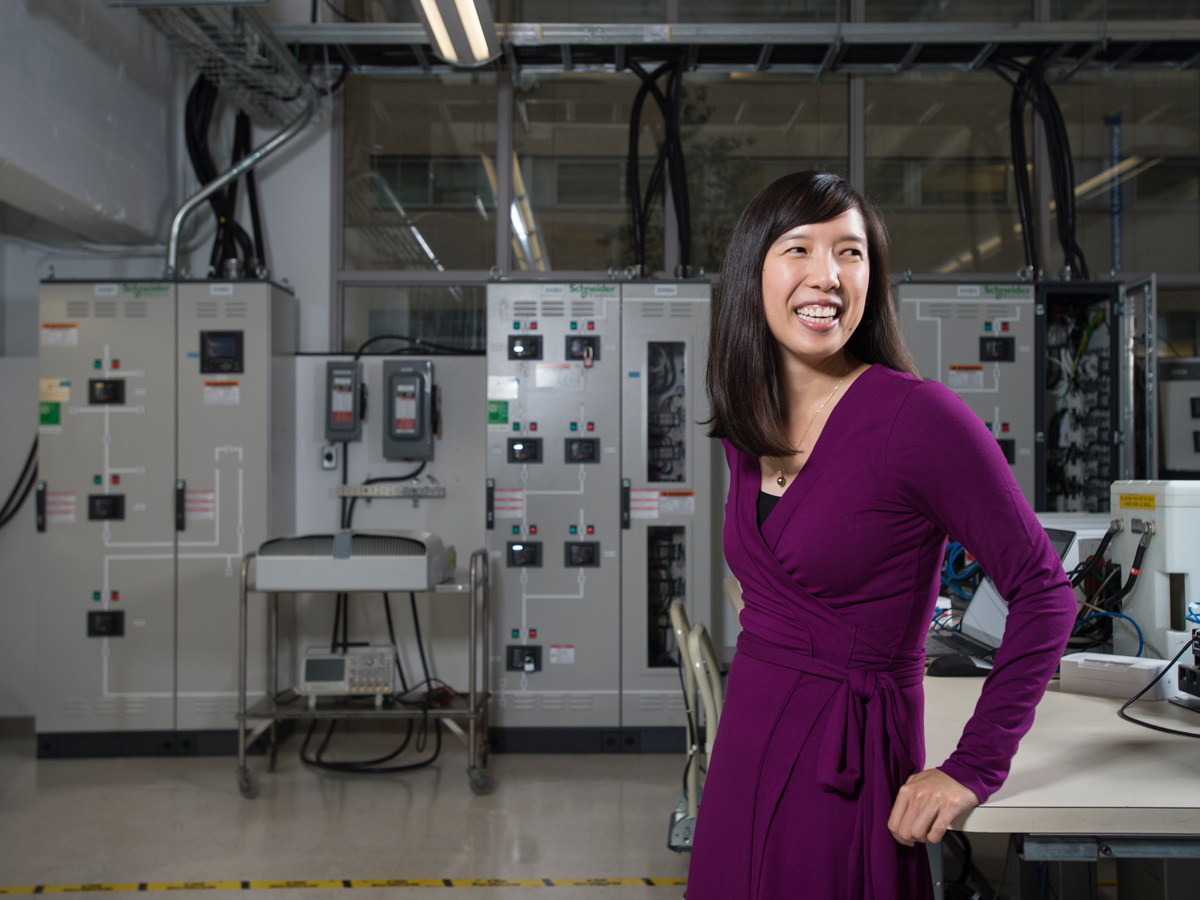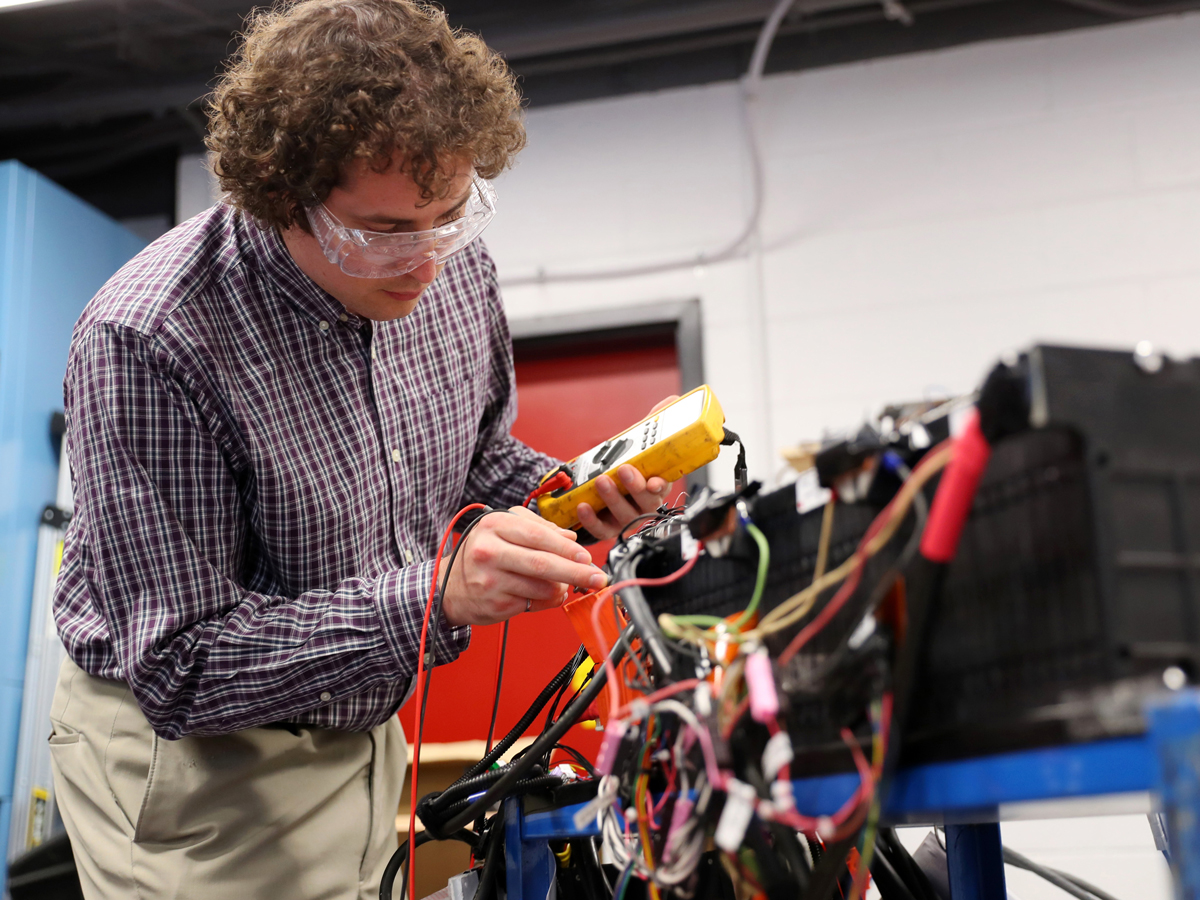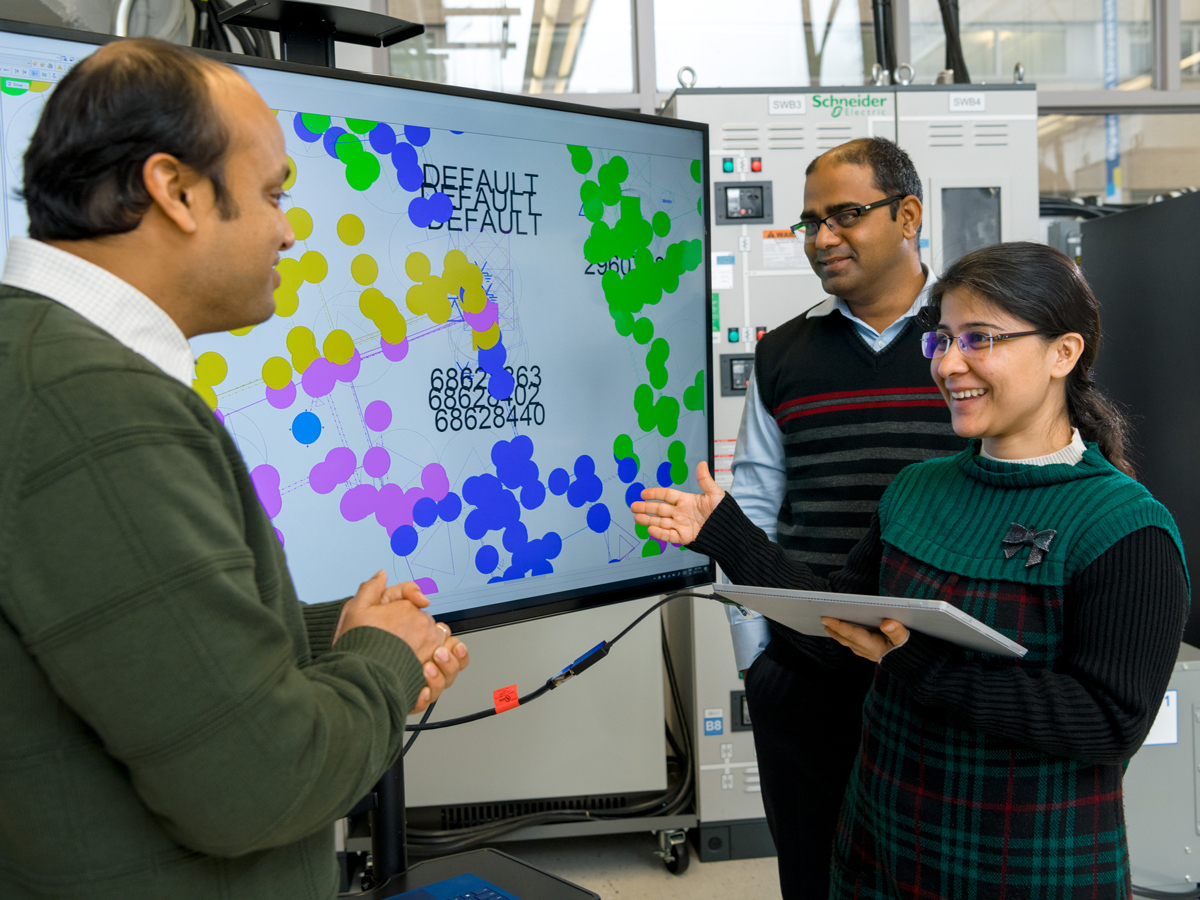Featured research projects

CUE is an industry-academic collaboration. Our founding sponsors, Hydro One, the Independent Electricity System Operator (IESO) and Toronto Hydro, understood that research is essential for developing a carbon-free energy system. Since 2010, we have worked with dozens of partners on a wide range of projects focused on pressing energy issues. All of our partnered projects share a common quality: tangible outcomes. Read more about five key research projects from 2018 below.

Feasibility study with North American transit company on hydrogen-based electrification
Increasing urbanization requires that public transportation systems carry ever-greater numbers of people efficiently and cost-effectively – ideally, with a small carbon footprint for a cleaner city.
Problem
Diesel-powered public transportation systems continue to emit greenhouse gasses and contribute to both air pollution and climate change.
Solution
Choosing a clean, sustainable energy source requires an economic assessment of energy costs and the benefits of direct electrification (DE) versus hydrogen-based electrification (Hydrail) to determine which offers better value. It also involved modelling the projected hourly load, hourly Ontario energy prices (HOEP) and global adjustment (GA) fees to offer an evidence-based conclusion.
CUE’s role
The research team of Carlos Sabillon, Bob Singh and Bala Venkatesh compared DE and hydrogen models to determine optimal electrical demand profiles and assess the economic impact of choosing hydrogen for mass transit.

IESO Research Fellowship renewed to explore transactive energy systems
The IESO, a founding partner of CUE, has renewed its funding for original research on energy storage (ES) and transactive energy systems (TES).
Problem
Traditionally, customers only interact with the energy grid to buy and receive. With energy use and storage on the rise, there are opportunities for a two-way system, but there is no fluid market for selling back to the grid during peak or other times.
Solution
Ontario needs a flexible electricity marketplace for energy exchange. This requires a transactive energy framework at the distribution level as a base for negotiated contracts and economic benefits for components (such as storage devices and electric vehicles) in the system.
Impact
A transactional energy system will revolutionize the market for electricity by creating local energy economies (neighbourhoods, towns, regions) and enabling the larger system to function more efficiently. A dynamic balance of supply and demand across Ontario’s electrical infrastructure can be achieved by a TES.
CUE’s role
From 2018-2020, research fellows Carlos Sabillon and Amr Adel will develop a TES framework that includes agencies to control the market portion of the distribution system, aggregators to combine smaller assets that offer services to the grid, and industrial customers who can impact market price. Research fellow Jessie Ma (pictured) will conduct the accompanying research into energy storage.
"A changing world can present challenges, but the IESO’s partnership with CUE is an example of addressing change in a proactive and positive way. Together, we are exploring innovative solutions that will help Ontario’s electricity system be reliable and cost-efficient in the years to come."

Partnership with Toronto Hydro pushes the limits of power quality
Toronto Hydro provides electric power supply at a high power quality that meets or exceeds North American standards. But some customers are sensitive to momentary interruptions and require an enhanced power quality.
Problem
Large loads experience momentary power interruptions and voltage sags which could last from a few cycles (one cycle = 16.6 milliseconds) to several seconds. These incidents cause certain sensitive equipment to malfunction.
Solution
A criterion is needed for correcting incidents in less than 10 milliseconds after the start of the momentary interruption. A power conditioner and a bypass switch can correct momentary power interruptions and voltage sags that a sensitive customer experiences such that the compensated voltage at the site falls above the chosen criterion.
Impact
The power conditioner exploits the assumed fast control actions that can be taken by power electronics devices. Therefore, the adverse impact of momentary power interruptions and voltage sags at customer sites can be mitigated.
CUE’s role
Under the direction of Bala Venkatesh and Omid Alizadeh (pictured), researchers at CUE developed and designed the solution proposed in this project in consultation with Toronto Hydro engineers. They also studied the performance of the proposed solution.
"Toronto Hydro aims to provide our customers with a resilient electricity supply. We work together with the Centre for Urban Energy to support these endeavours with leading-edge studies in an effort to determine optimal solutions."

NSERC investment supports national project
Modern grid-scale energy storage – such as large battery systems – is set to transform the electricity system in Canada, offering immense benefits to industries, utilities, governments and consumers.
Problem
Canadian transmission and distribution assets are aging and require significant investment, conservatively estimated at $350 billion by 2030. Energy storage can help reduce or eliminate these costs while providing a solution to renewable energy intermittency and improving grid resilience.
Solution
This five-year, $5 million pan-Canada network, funded by NSERC, brings together the brightest minds in academia, industry, utility and government to explore four research themes aimed at developing and marketing the next generation of energy storage technologies.
Impact
The NSERC Energy Storage Technology Network (NESTNet) is poised to become the global leader in energy storage, placing Canada at the forefront of this growing market. The network will also train highly qualified personnel to build and operate the next generation of electricity systems with energy storage.
CUE’s role
CUE plays a central role in NESTNet, leading its creation and managing the network. CUE researchers are also heading several projects within the four interrelated research themes and providing Ryerson students with hands-on experience.
"NESTNet research has rapidly accelerated beyond the lab with technologies, policies and papers developed that are ready to be applied and adopted in the real world."

A new future for Tata Power Delhi Distribution Limited
Tata Power Delhi Distribution Limited (Tata Power-DDL), the Ontario Ministry of Energy, Northern Development and Mines and Ryerson University partnered to complete a multi-stage research project with final studies issued by CUE on the future impact of energy storage and increased adoption of solar panels and electric vehicles.
Problem
Tata Power-DDL needs to plan ahead for a changing system load profile. It must maintain a grid that can manage increases in both new energy technologies (such as batteries and solar panels) and energy demand (such as electric vehicle uptake). It also needs to accommodate power flowing from the customer to the company while minimizing costs.
Solution
Representative sections of the Tata Power-DDL network were acquired and analyzed to understand the implications and make recommendations regarding Delhi’s changing energy needs, storage and technologies.
Impact
Solutions for the growing needs of this heavily populated area of India will benefit the entire country. Real-world testing and data can be used to plan the grid of the future and meet ever-increasing demands for energy consumption, storage and two-way power delivery. In addition, export opportunities for Ontario technology companies are provided.
CUE’s role
CUE led this planning study. Researchers assimilated data received from Tata Power-DDL, developed recommendations for improvements in technical efficiencies such as loss reduction, and provided guidance to manage future development and new products such as solar PV, energy storage and electric cars.
"The Centre for Urban Energy is a world-renowned research centre. There is no better team to work with as we look to test and integrate the edge-of-the-grid technologies that will help us deliver clean, safe, affordable and reliable electricity to our customers."